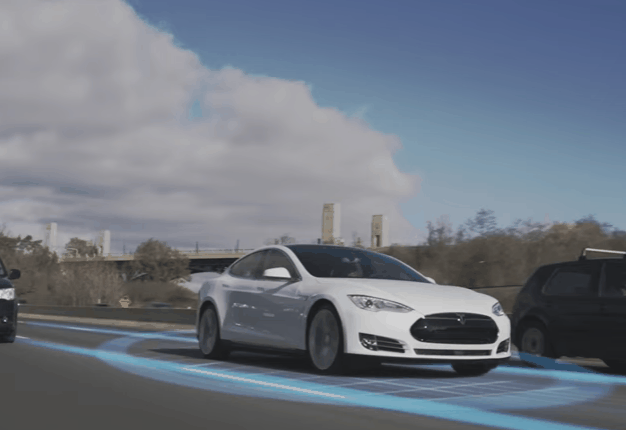
Washington - All new cars and light trucks would be able to talk wirelessly with each other, with traffic lights and with other roadway infrastructure under a rule the US Transportation Department proposed Tuesday (December 13).
Officials say the technology holds the potential to dramatically reduce traffic deaths and transform driving.
Vehicle-to-vehicle communications, or V2V, enables cars to transmit their locations, speed, direction and other information ten times per second. That lets cars detect, for example, when another vehicle is about to run a red light, is braking hard, changing lanes or coming around a blind turn in time for a driver or automated safety systems to prevent a crash.
Mitigating collisions
The technology has the potential to prevent or mitigate the severity of up to 80% of collisions that don't involve alcohol or drugs, officials said.
US Transportation Secretary Anthony Foxx said: "V2V will provide 360-degree situational awareness on the road. We are carrying the ball as far as we can to realize the potential of transportation technology to save lives."
Automakers and the government have been working together on developing technology for more than a decade. Under the department's proposal, V2V systems would be required to "speak the same language" through standardized messaging the government has developed with industry.
READ: Volvo to develop autonomous driving systems
The Federal Highway Administration plans to separately issue guidance to help transportation planners integrate two-way wireless technology into roadway infrastructure such as traffic lights, stop signs and work zones. Cars could communicate information on road conditions to the infrastructure, which could then be passed along to other vehicles as they come along.
Traffic lights would know when to stay green to avoid unnecessary waiting and reduce congestion.
There is a 90-day comment period on the proposal, and officials said they expect it will be about a year before a final rule is released.
The proposal calls for 50% of new vehicles to have the technology within two years after a final rule is issued, and 100% of vehicles with four years. It would still take years or even decades after that for the full potential of V2V to be realized. That's because V2V can prevent collisions only among vehicles equipped with the technology.
Implementing the technology
It takes decades for the entire fleet of vehicles on the road to turn over. But the process of spreading V2V throughout the fleet may go faster if, as expected, devices are developed that enable motorists to add the technology to older vehicles.
Some automakers aren't waiting for the final rule. General Motors has said previously that it plans to include V2V in some 2017 Cadillacs. The 2017 Mercedes E-Class sedans are also equipped with V2V.
READ: Land Rover shows off self-driving 4x4 tech
V2V's range is up to about 915m in all directions, even when sight is blocked by buildings or other obstacles. That gives the technology the advantage of being able to detect a potential collision before the driver can see the threat, unlike the sensors and cameras of self-driving cars that sense what's immediately around the vehicle.
Industry and government officials see the two technologies as complementary. Ultimately, self-driving cars that are also equipped with V2V may be the answer to traffic congestion because they'll be able to synchronize their movements so that they can merge seamlessly and safely travel in long, closely packed caravans at higher speeds. That would improve traffic flow and increase highway capacity.
To address cybersecurity, the proposal requires that V2V systems employ a security level of at least 128-bit encryption and comply with benchmarks of the National Institute of Standards and Technology.
Protecting the driver
To protect privacy, V2V messages are anonymous - they don't contain any information on the driver, owner of the vehicle, make or model, vehicle identification number or license plate. The messages are also of brief duration and not retained, therefore it's not possible to use the messages to determine where a vehicle has been or to search for a particular vehicle among others on the road, said Debra Bezzina, an engineer with the University of Michigan's Transportation Research Institute who works on the technology.
READ: US guidelines on autonomous cars get good reception at G7
One hurdle facing the technology is preservation of its exclusive right to use the 5.9 Ghz radio spectrum that Congress specifically set aside for V2V years ago. Since then, an explosion in the number of wireless devices and skyrocketing demand for ever faster Wi-Fi has led to pressure from technology companies who want permission to use the same spectrum.
The Federal Communications Commission is in the first phase of a three-phrase testing program to see if sharing the spectrum with Wi-Fi would interfere with V2V signals.
Spectrum sharing should be allowed "only if it can be proven that no harmful interference occurs," said the Alliance of Automobile Manufacturers in a statement. "Any interference could result in a crash, or even worse, an injury or fatality.




 Publications
Publications
 Partners
Partners















